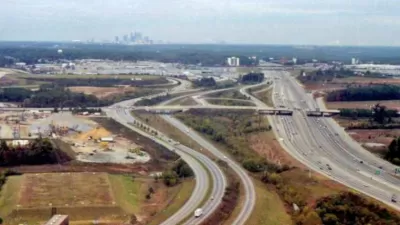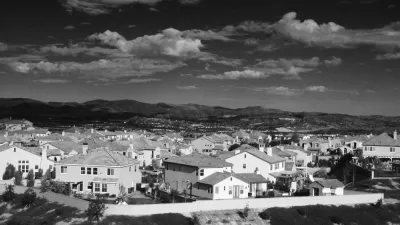Land use and transportation planning decisions provide a framework on which other social policies have created particularly isolating and intractable poverty in the South.
The fourth article in a series published last month by The Washington Post focuses on the barriers of access that make the poverty of the American South particularly isolating and difficult to overcome.
The author of the article, Chico Harlan, begins with story of Lauren Scott, a homeless, 28-year-old mother, relying on public transit to find a new job in Atlanta. On the day Harlan followed her, Scott's job search require 69 stops on a bus, a nine-minute train ride, another 49 stops on a bus, and a quarter-mile walk. According to Harlan, "this was a day much like the others, when the cost of destitution was a job hunt in which even the simplest task — placing an application — required four hours, round-trip, on a bus."
Here Harlan sums up the roots of the daily challenge faced by Scott and others like her:
"In the metropolitan areas of the Deep South, government policies and rising real estate prices have pushed the poor out of urban centers and farther from jobs. Low-income people have, in turn, grown more reliant on public transit networks that are among the weakest of quality in the country. When they search for work, they step into a region where pay tends to be low and unemployment tends to be high."
The magazine feature-style article focuses a lot more on Scott's experience of falling into poverty in the service of making large points about the unique qualities and causes of poverty in the contemporary South—a particularly isolating form of poverty exacerbated by the structure and systems of Southern communities.
FULL STORY: A lonely road

Coming Soon to Ohio: The Largest Agrivoltaic Farm in the US
The ambitious 6,000-acre project will combine an 800-watt solar farm with crop and livestock production.

Pennsylvania Mall Conversion Bill Passes House
If passed, the bill would promote the adaptive reuse of defunct commercial buildings.

U.S. Supreme Court: California's Impact Fees May Violate Takings Clause
A California property owner took El Dorado County to state court after paying a traffic impact fee he felt was exorbitant. He lost in trial court, appellate court, and the California Supreme Court denied review. Then the U.S. Supreme Court acted.

Dallas Surburb Bans New Airbnbs
Plano’s city council banned all new permits for short-term rentals as concerns about their impacts on housing costs grow.

Divvy Introduces E-Bike Charging Docks
New, circular docks let e-bikes charge at stations, eliminating the need for frequent battery swaps.

How Freeway Projects Impact Climate Resilience
In addition to displacement and public health impacts, highway expansions can also make communities less resilient to flooding and other climate-related disasters.
City of Costa Mesa
Licking County
Barrett Planning Group LLC
HUD's Office of Policy Development and Research
Mpact Transit + Community
HUD's Office of Policy Development and Research
Tufts University, Department of Urban and Environmental Policy & Planning
City of Universal City TX
ULI Northwest Arkansas
Urban Design for Planners 1: Software Tools
This six-course series explores essential urban design concepts using open source software and equips planners with the tools they need to participate fully in the urban design process.
Planning for Universal Design
Learn the tools for implementing Universal Design in planning regulations.

























